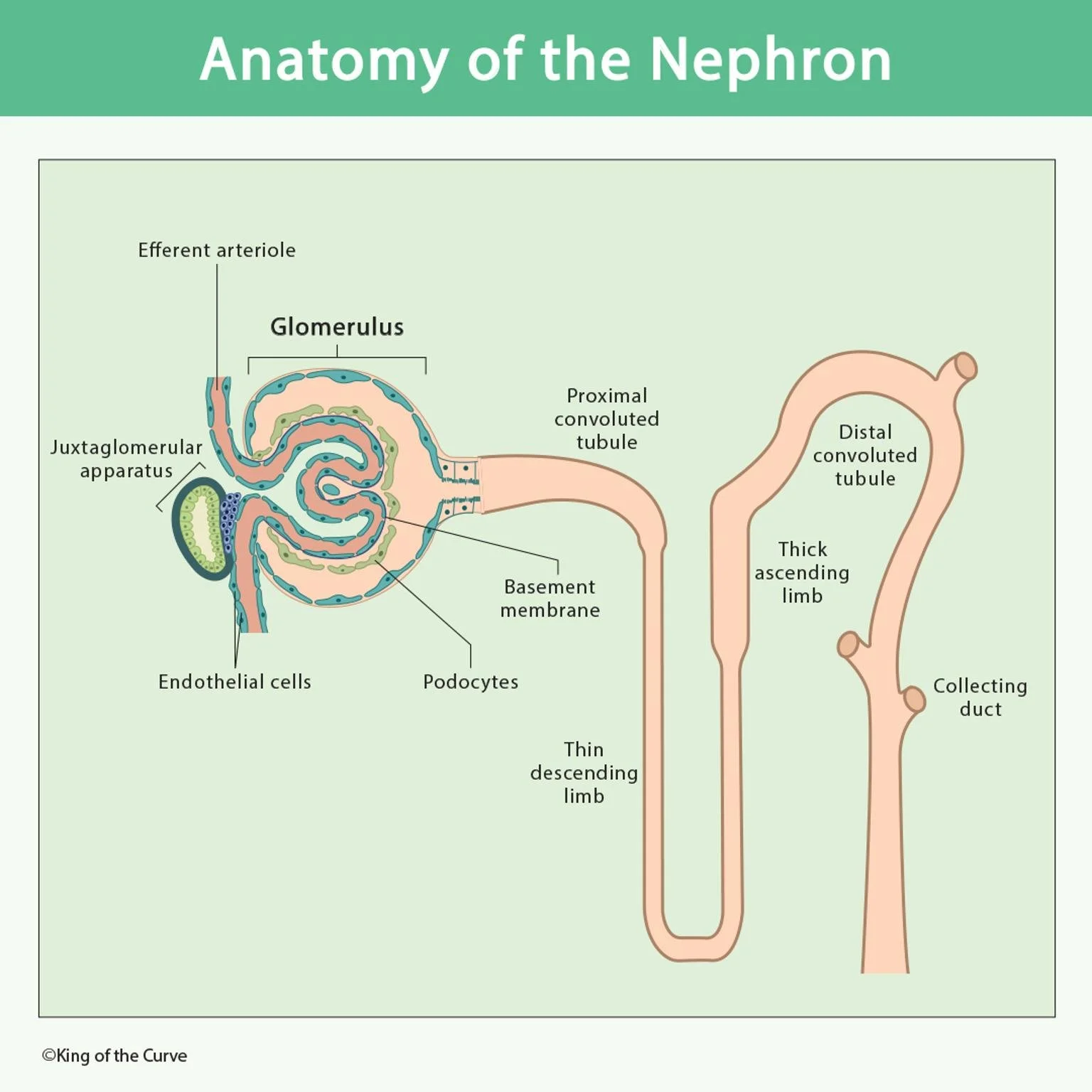🧠 Anatomy of the Nephron: The Kidney’s Filtration Master
The nephron is the fundamental functional unit of the kidney, responsible for filtering blood, removing waste, and maintaining fluid and electrolyte balance. Each human kidney contains approximately 1 million nephrons, each working in harmony to ensure the body's internal environment remains stable.
📍 Key Components of the Nephron
🔬 1. Glomerulus
A tuft of capillaries encased in Bowman’s capsule.
Primary site for blood filtration.
Surrounded by podocytes and the basement membrane, which help form the filtration barrier.
🧪 2. Juxtaglomerular Apparatus (JGA)
Located near the glomerulus.
Consists of:
Juxtaglomerular cells (secrete renin)
Macula densa cells (detect sodium concentration)
Helps regulate blood pressure and glomerular filtration rate (GFR).
💉 3. Afferent and Efferent Arterioles
Afferent arteriole brings blood into the glomerulus.
Efferent arteriole carries filtered blood out.
The difference in diameter influences pressure within the glomerulus for effective filtration.
🌀 The Tubular System
Once blood is filtered in the glomerulus, the resulting filtrate travels through the renal tubule, which processes it further.
➿ 4. Proximal Convoluted Tubule (PCT)
Reabsorbs:
~65% of filtered sodium and water
Glucose, amino acids, bicarbonate
Contains microvilli to increase surface area.
🔽 5. Thin Descending Limb
Permeable to water, not solutes.
Passive reabsorption of water increases filtrate concentration.
🔼 6. Thick Ascending Limb
Impermeable to water.
Actively reabsorbs Na⁺, K⁺, and Cl⁻.
Creates a dilute filtrate and helps form a concentration gradient in the medulla (important for urine concentration).
➿ 7. Distal Convoluted Tubule (DCT)
Fine-tunes salt reabsorption under hormonal control (aldosterone).
Participates in acid-base balance.
🚿 8. Collecting Duct
Final site for water reabsorption, controlled by antidiuretic hormone (ADH).
Filtrate becomes concentrated or diluted here based on body needs.
Empties into the renal pelvis, continuing to the ureters.
🧠 Summary
The nephron is a highly specialized structure performing the delicate task of:
Filtering blood
Reabsorbing essential nutrients
Secreting waste and toxins
Balancing electrolytes and fluid levels
Understanding its structure reveals how the kidneys function as the body's natural filtration plant, essential for homeostasis.
📚 Why It Matters
Whether you’re a medical student, health professional, or a curious learner, mastering the anatomy of the nephron is foundational for understanding kidney physiology and diseases like:
Acute and chronic kidney failure
Hypertension
Diabetes-induced nephropathy
Frequently Asked Questions (FAQs)
-
Aim for 4-6 focused hours, ensuring you incorporate breaks to avoid burnout.
-
Practice mindfulness techniques, take practice exams under realistic conditions, and maintain a balanced lifestyle.
-
Set short-term goals, seek support from mentors, and reward yourself for small achievements.
-
Regular exercise improves focus, reduces stress, and enhances overall mental clarity.
-
KOTC offers personalized learning tools, gamification features, and adaptive question banks to help students stay on track without burnout.


